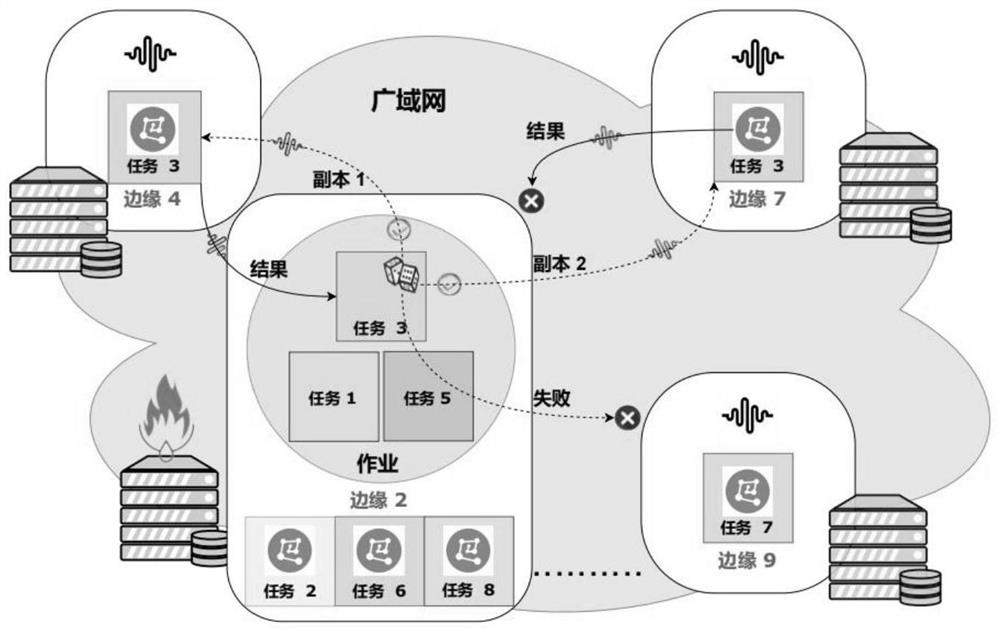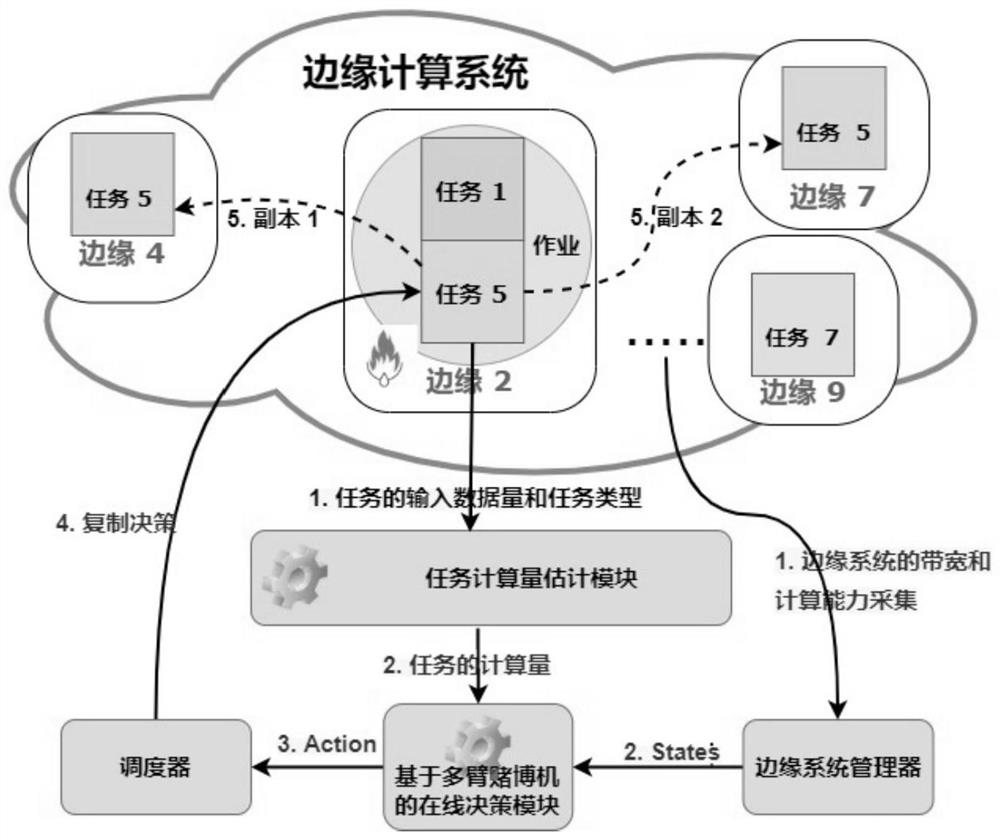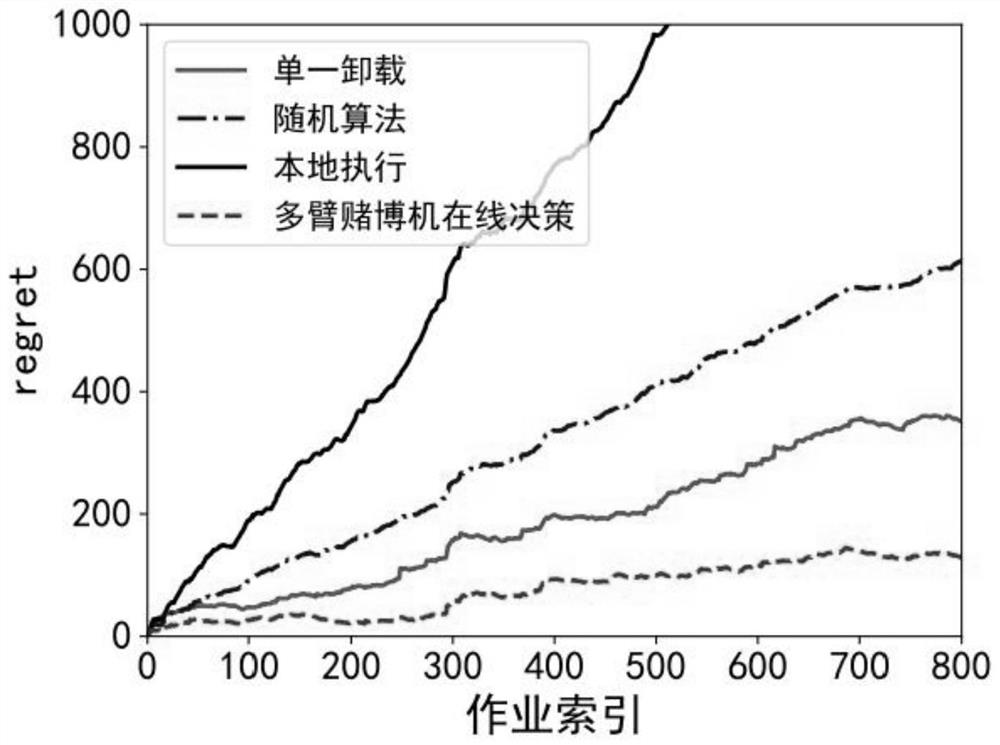Dynamic task replication method, device and system in edge computing environment
A technology of dynamic tasks and replication methods, applied in computing, computing models, program control design, etc., to achieve the effect of reducing queuing and computing delays
- Summary
- Abstract
- Description
- Claims
- Application Information
AI Technical Summary
Problems solved by technology
Method used
Image
Examples
Embodiment Construction
[0050] The technical solutions of the present invention will be further described below in conjunction with the accompanying drawings and embodiments.
[0051] The biggest feature of performing dynamic task replication in an edge computing environment is randomness. Due to the constant fluctuations in network bandwidth and edge cluster computing performance when executing tasks, it is impossible to predict the completion latency of tasks replicated to different edges before the replication decision. Also, the total delay after the decision is still a random amount. The actual completion delay of each task is not known until the task actually completes. Therefore, the task completion delay is an unknown distribution. Specifically, in the task replication delay model, bandwidth and edge computing capabilities satisfy unknown distributions, fluctuate with time, and cannot be predicted in advance. This uncertainty fits the multi-armed bandit model. Therefore, the multi-armed b...
PUM
 Login to View More
Login to View More Abstract
Description
Claims
Application Information
 Login to View More
Login to View More - R&D
- Intellectual Property
- Life Sciences
- Materials
- Tech Scout
- Unparalleled Data Quality
- Higher Quality Content
- 60% Fewer Hallucinations
Browse by: Latest US Patents, China's latest patents, Technical Efficacy Thesaurus, Application Domain, Technology Topic, Popular Technical Reports.
© 2025 PatSnap. All rights reserved.Legal|Privacy policy|Modern Slavery Act Transparency Statement|Sitemap|About US| Contact US: help@patsnap.com



